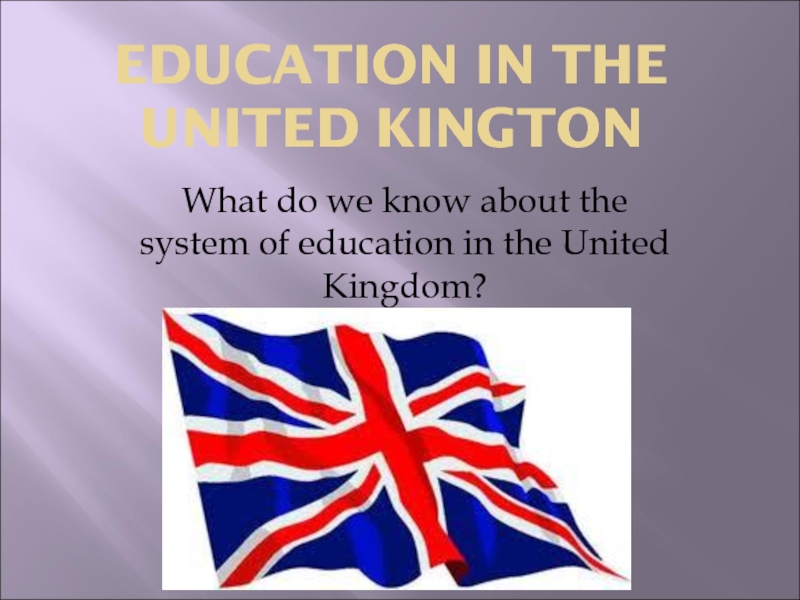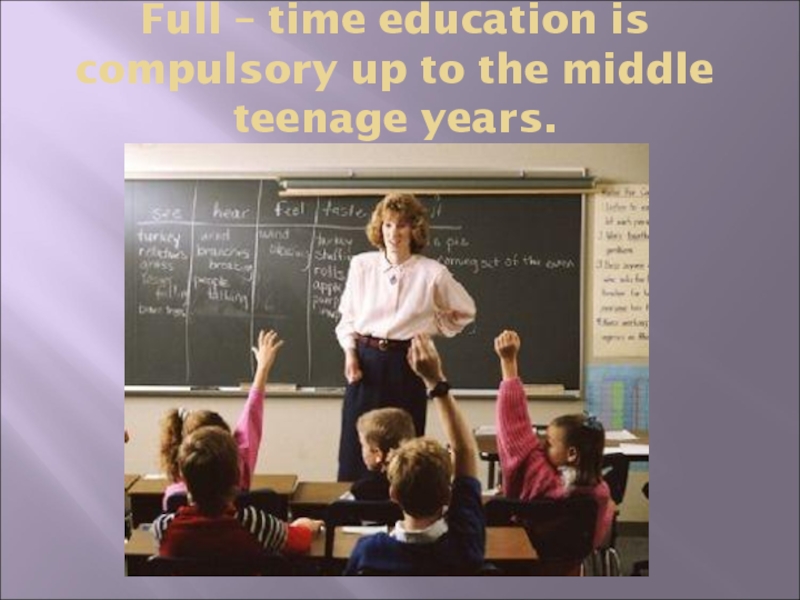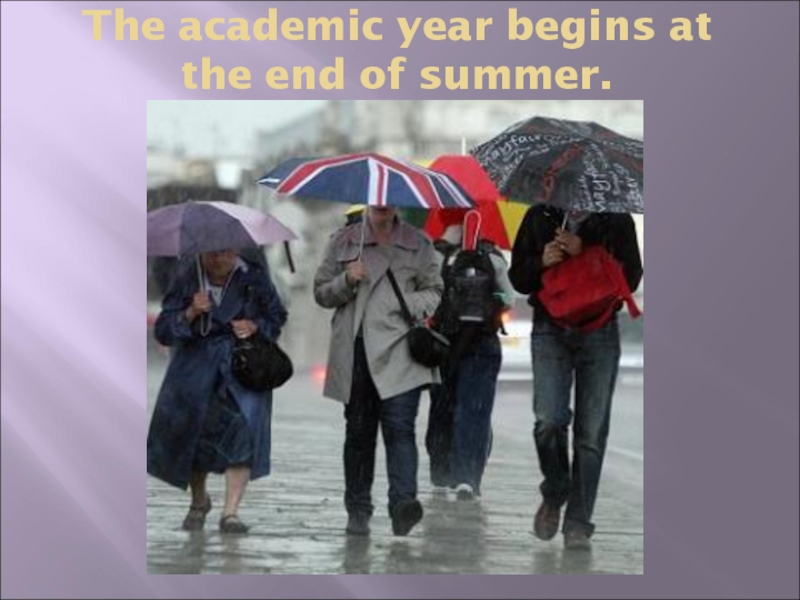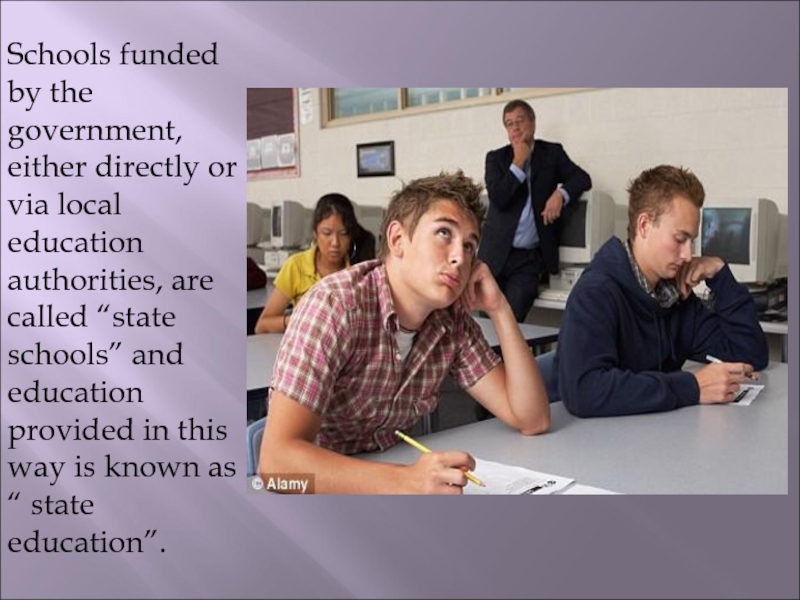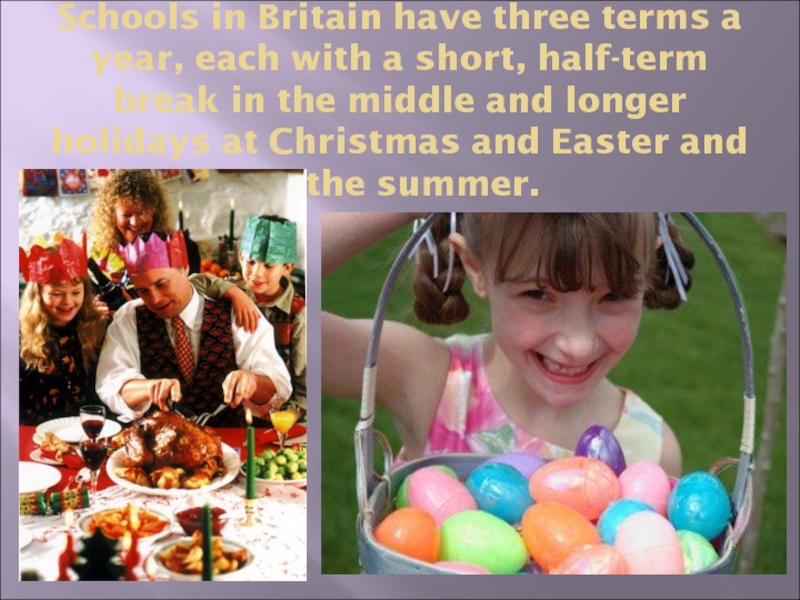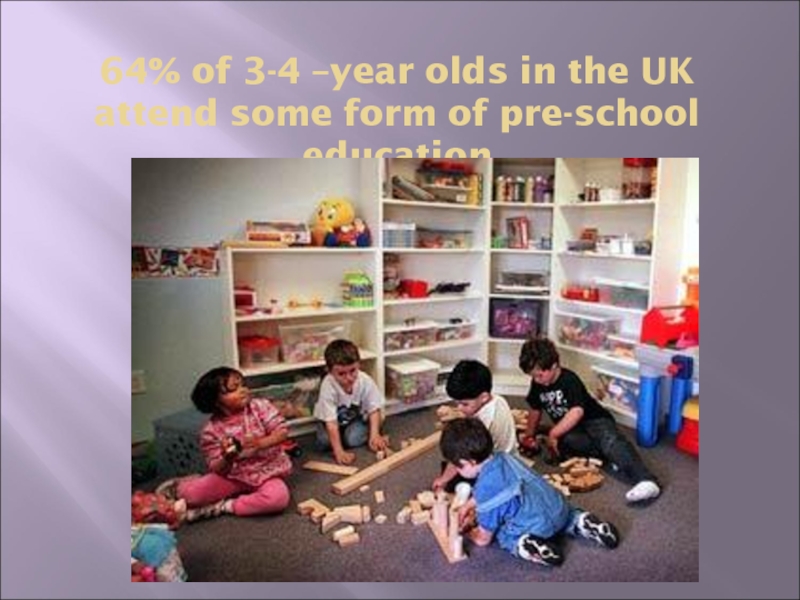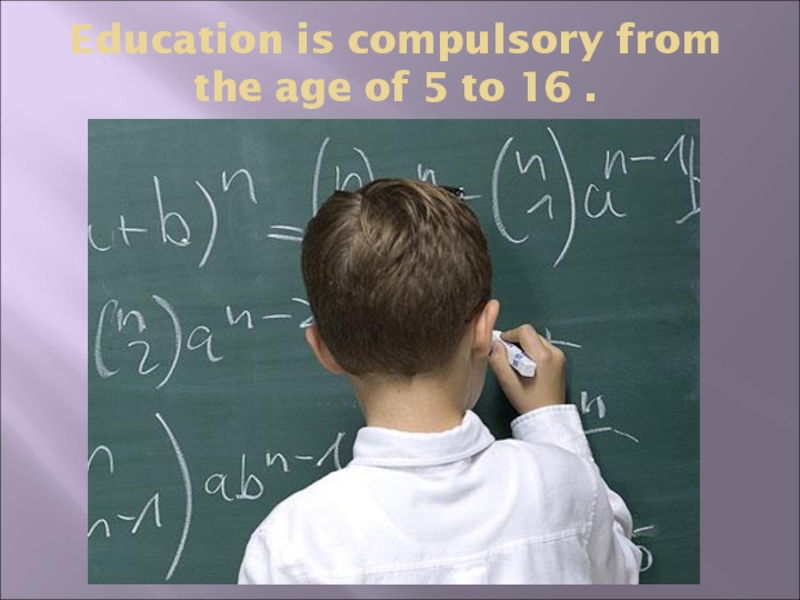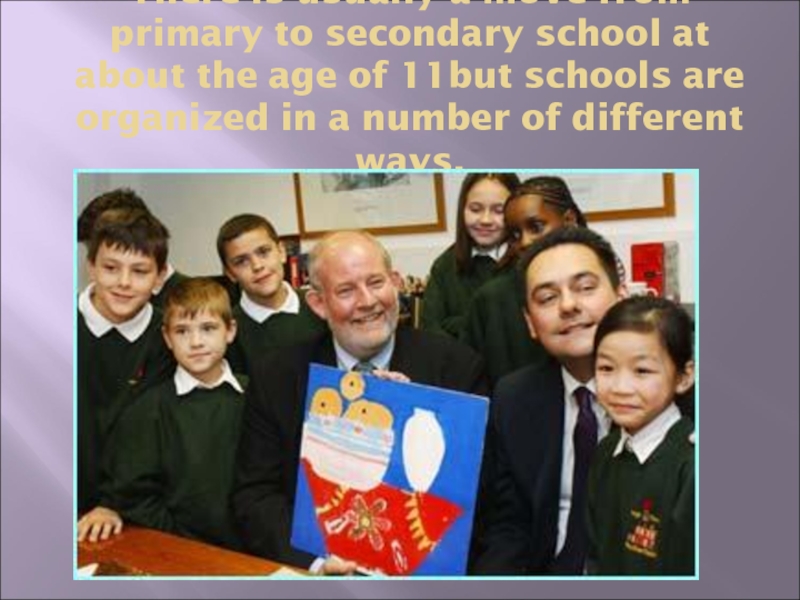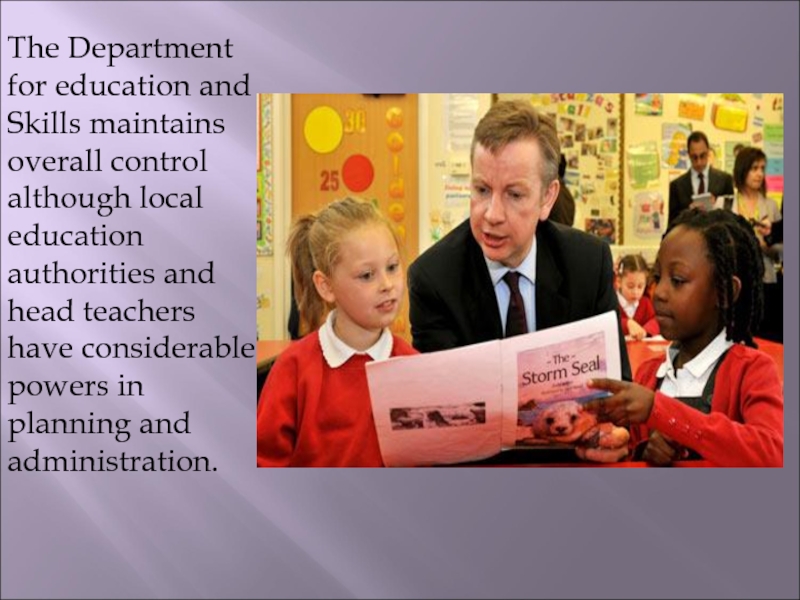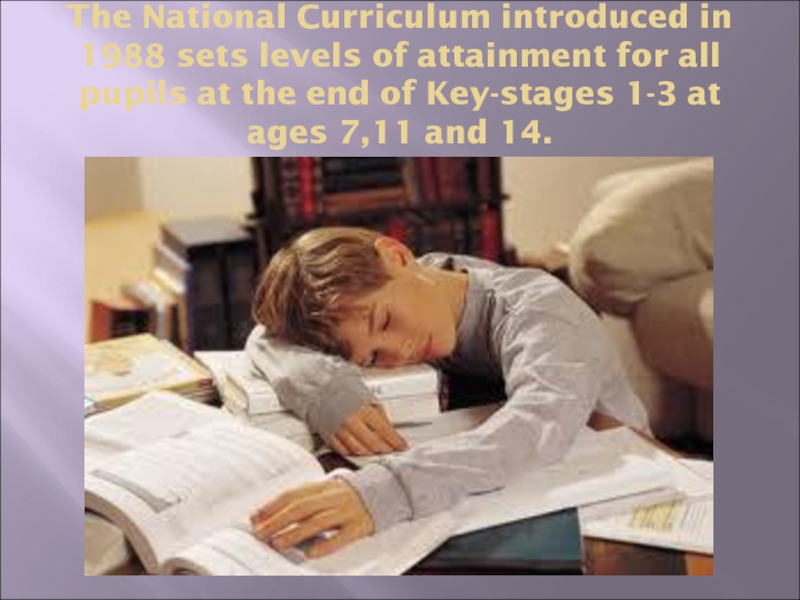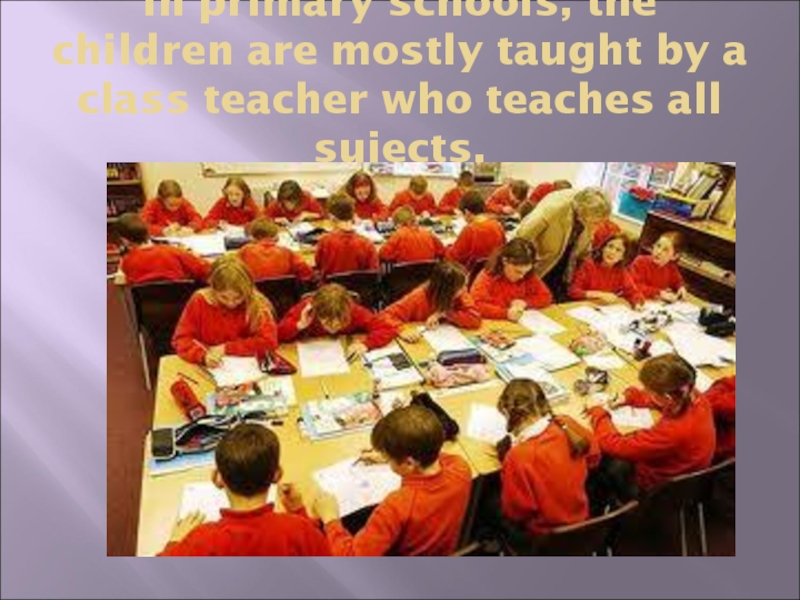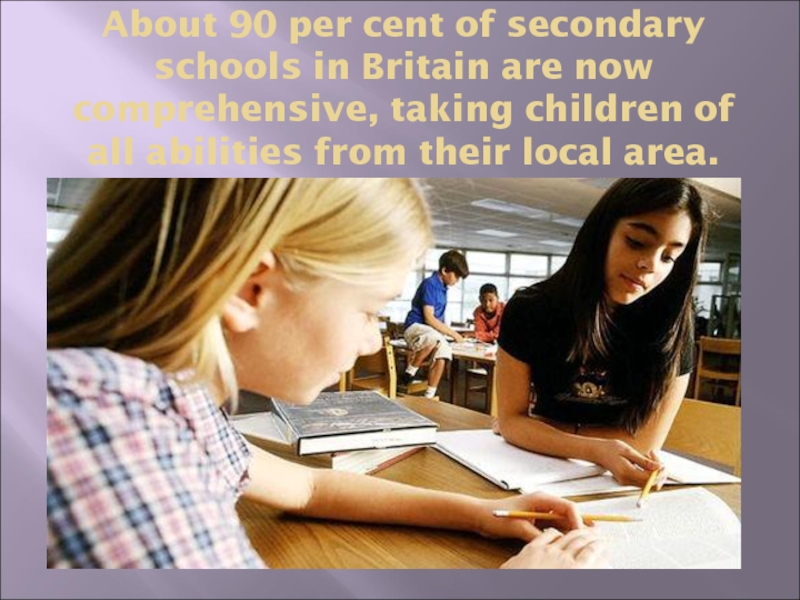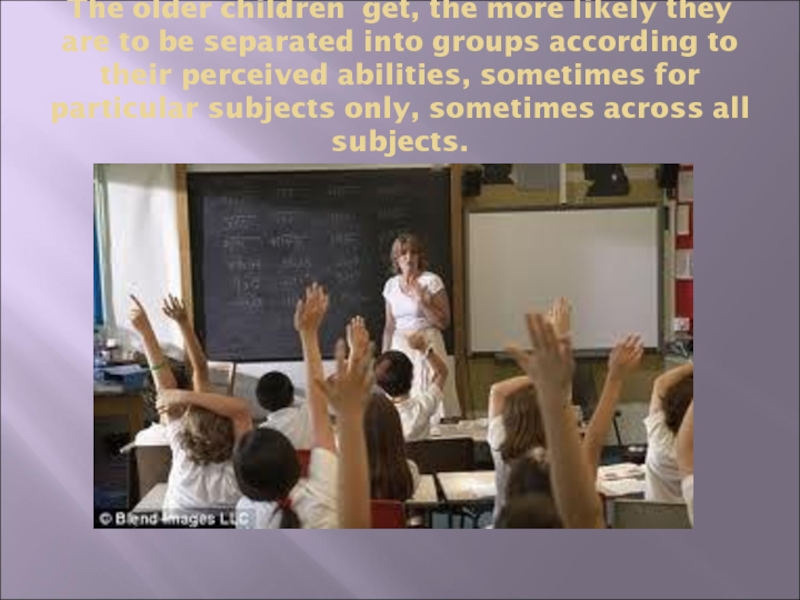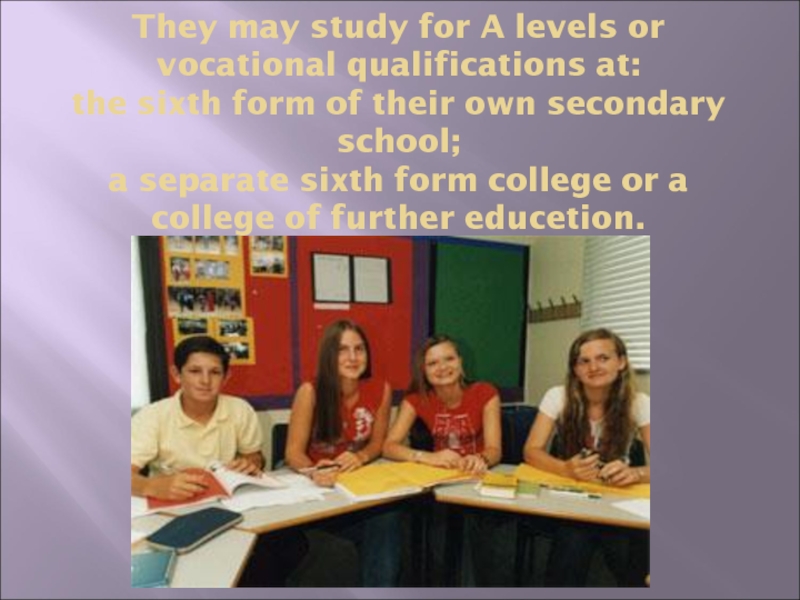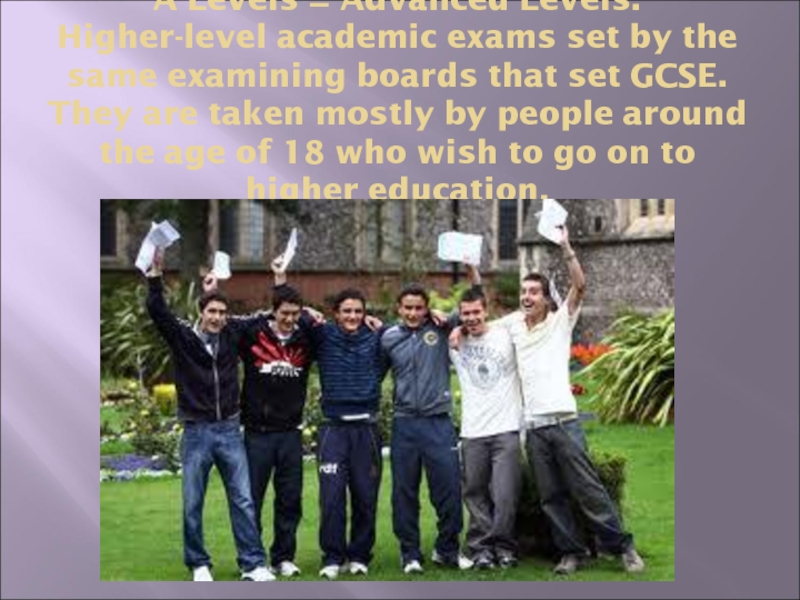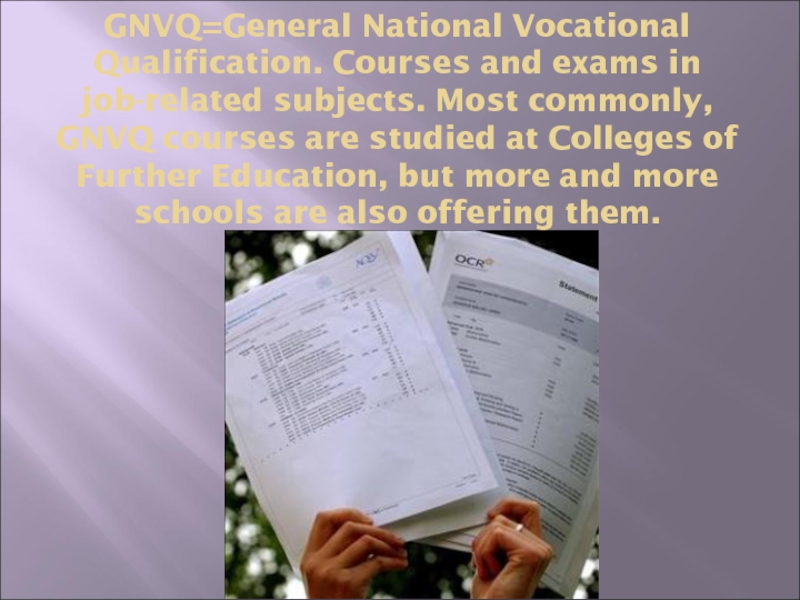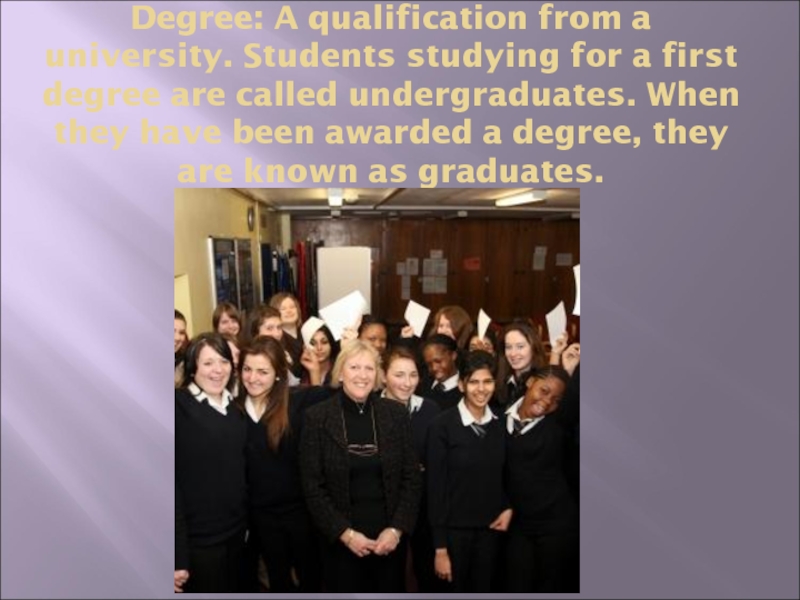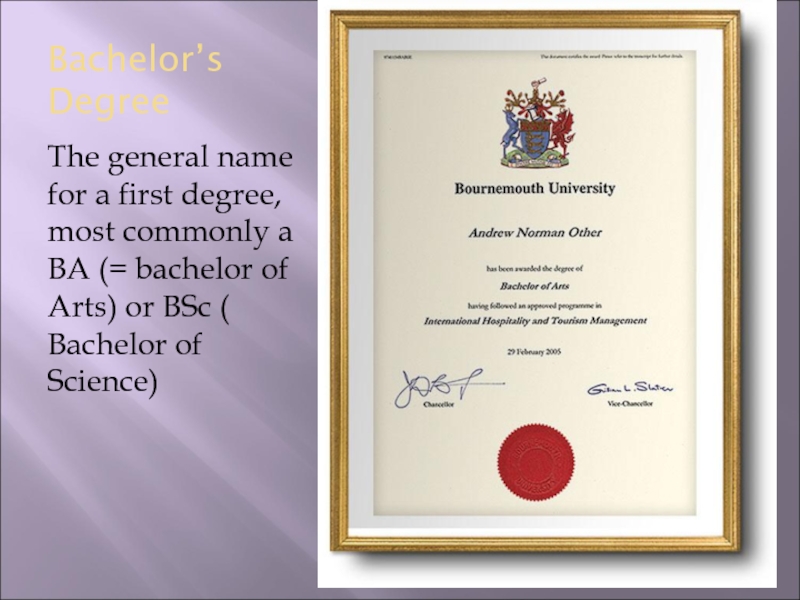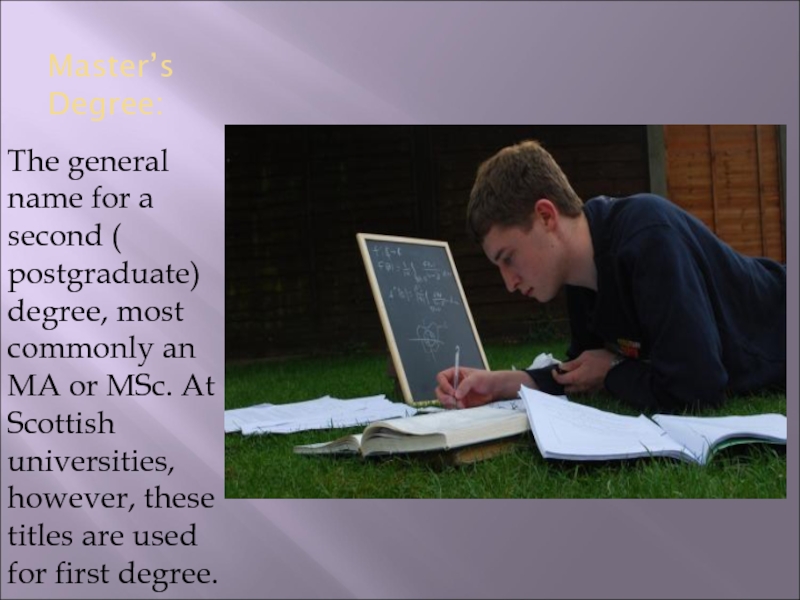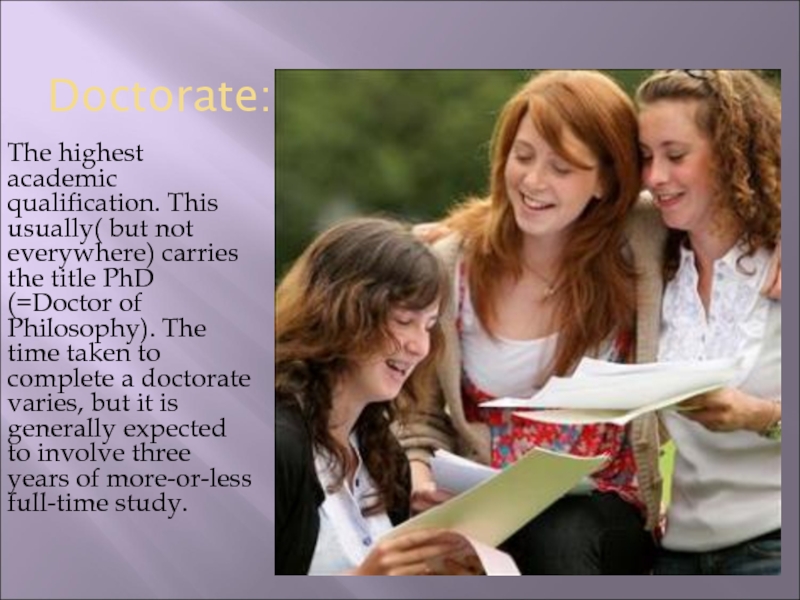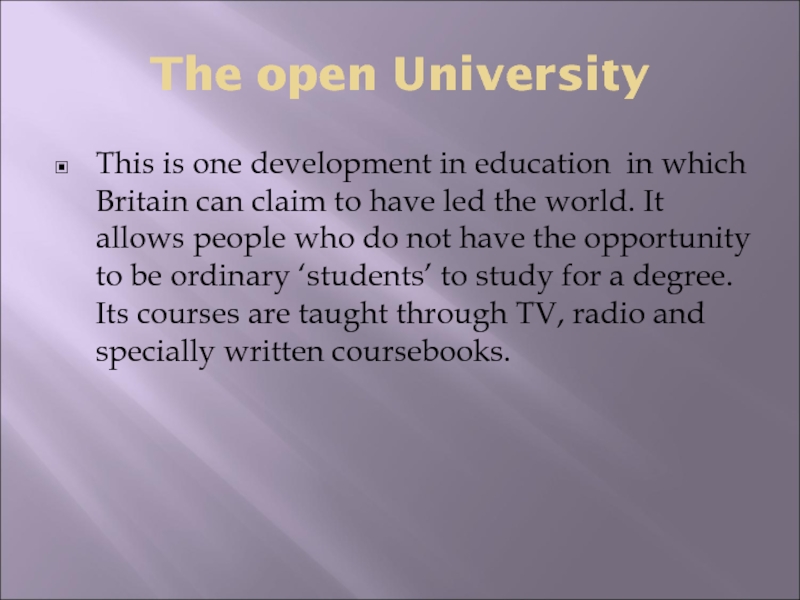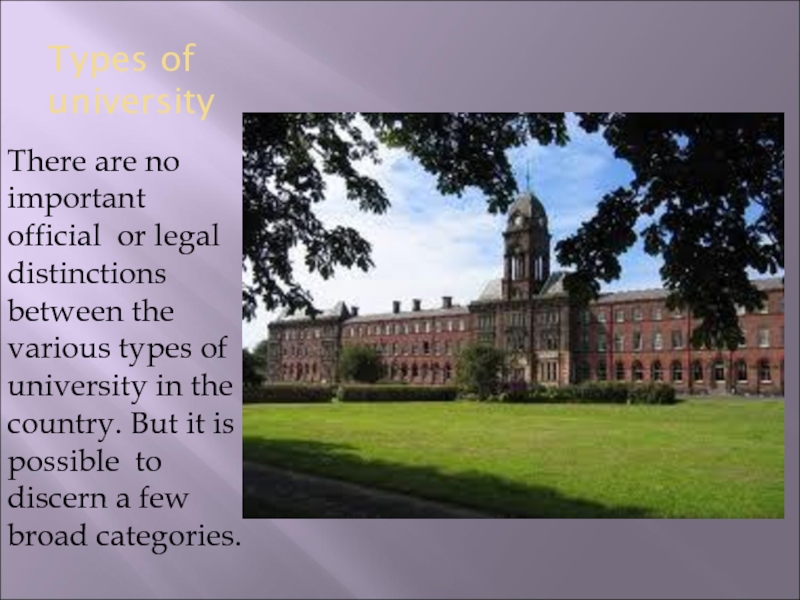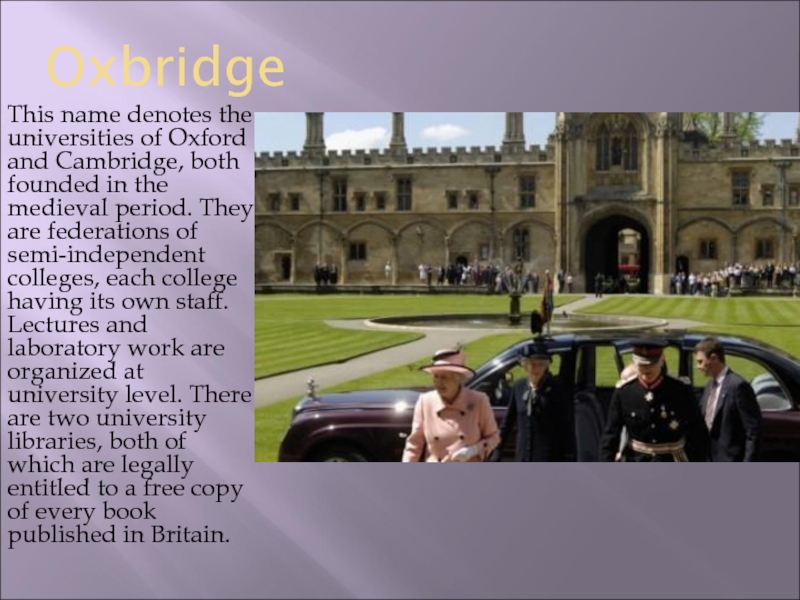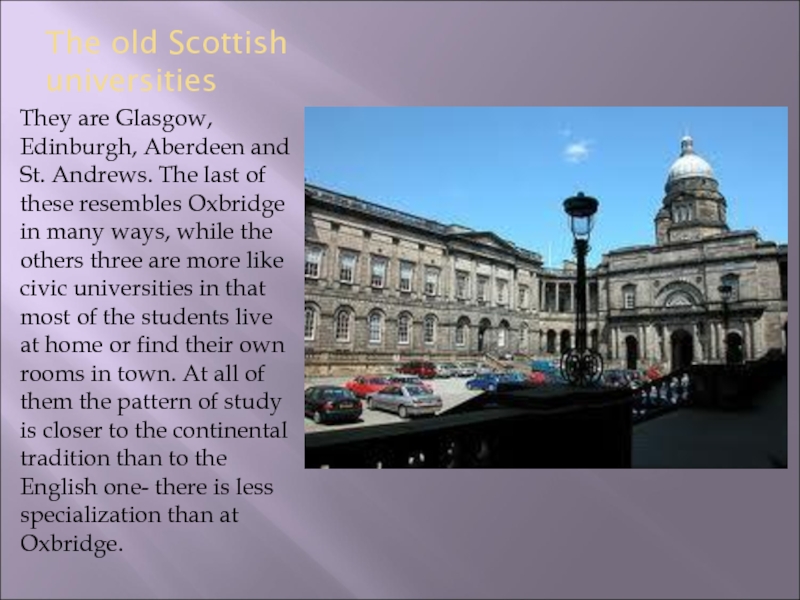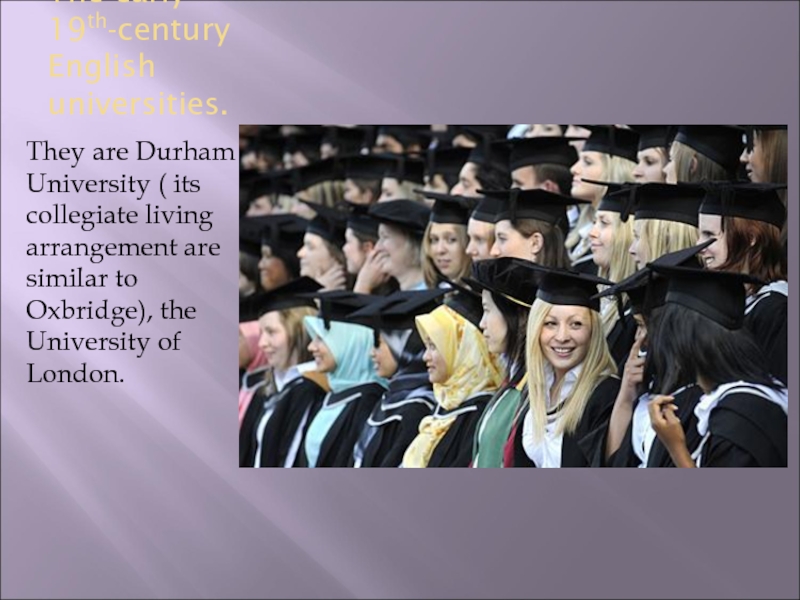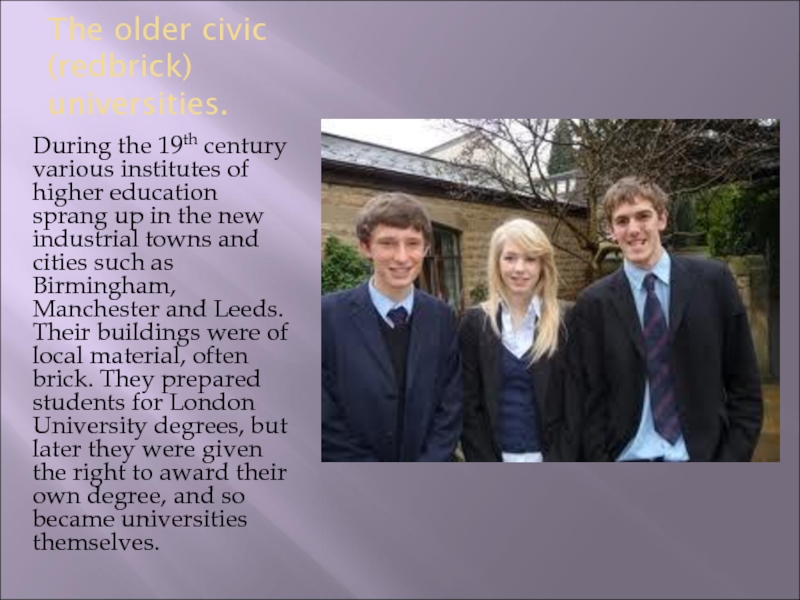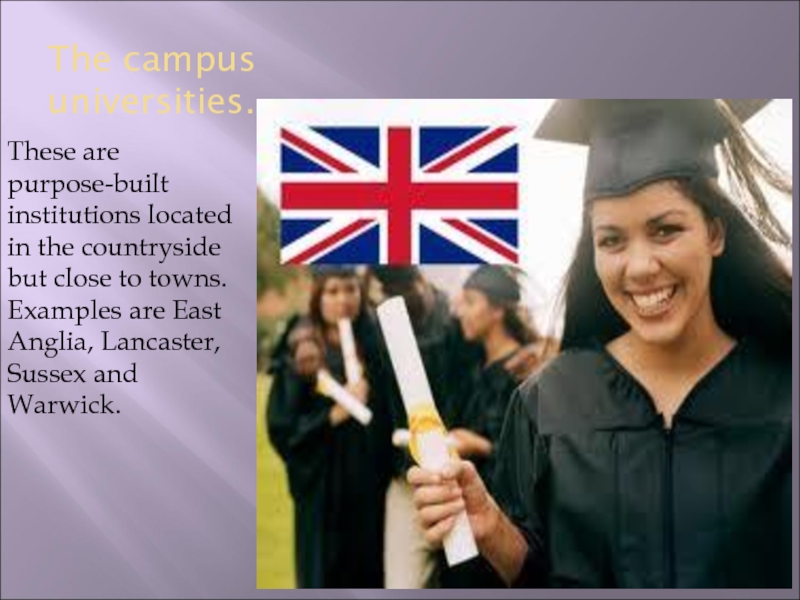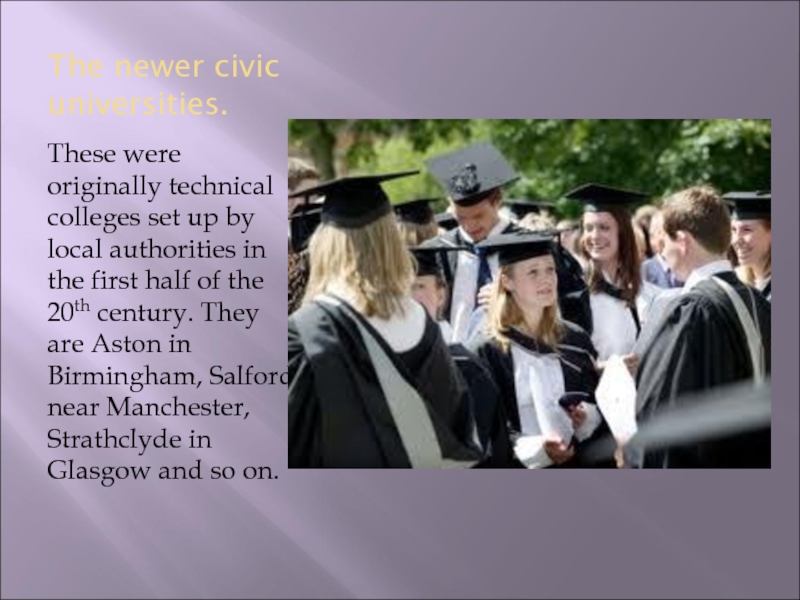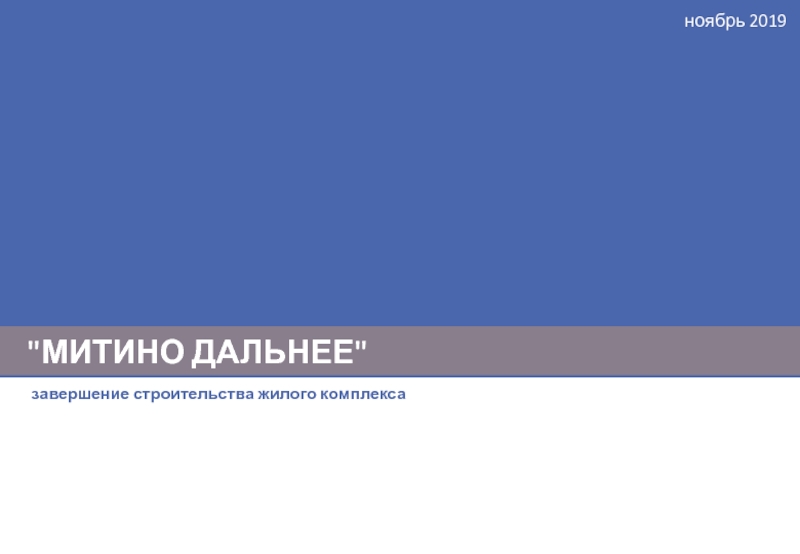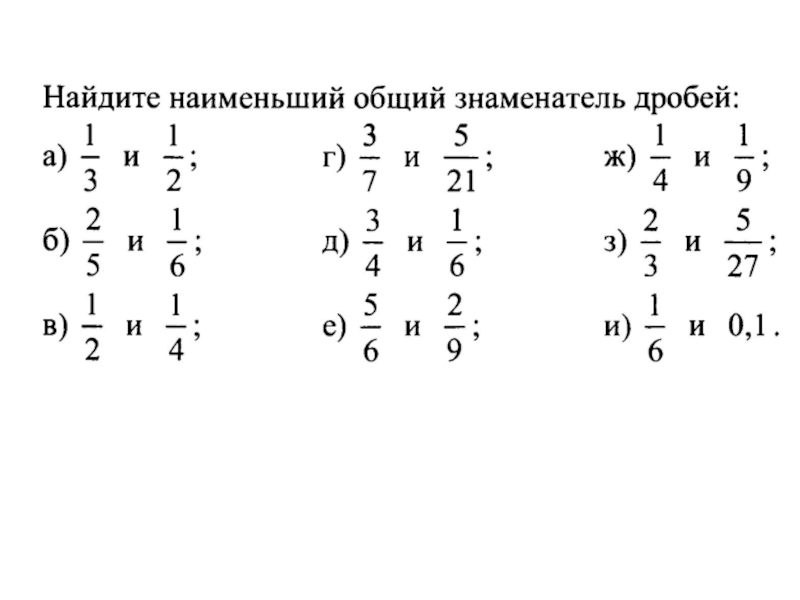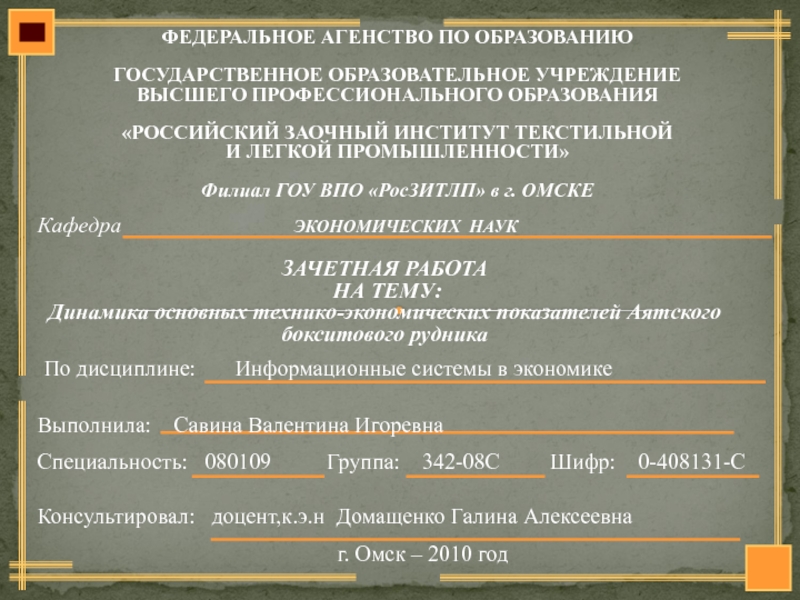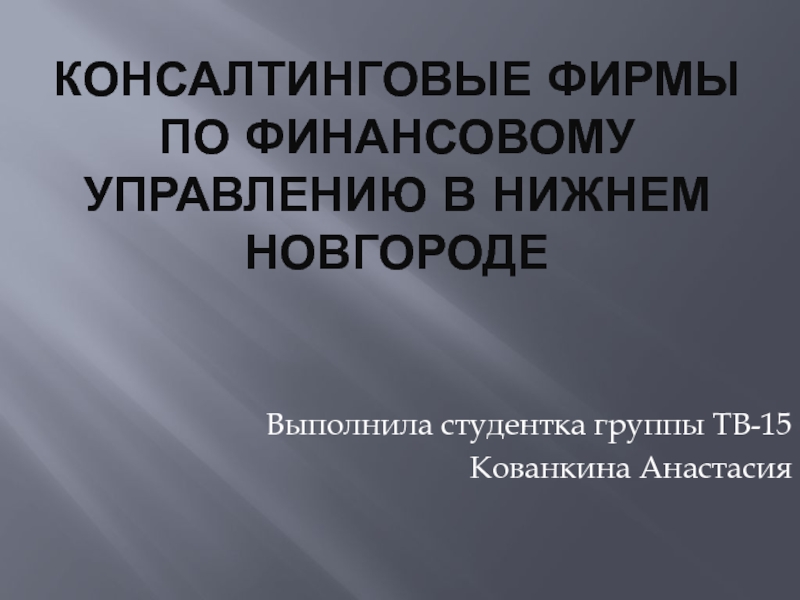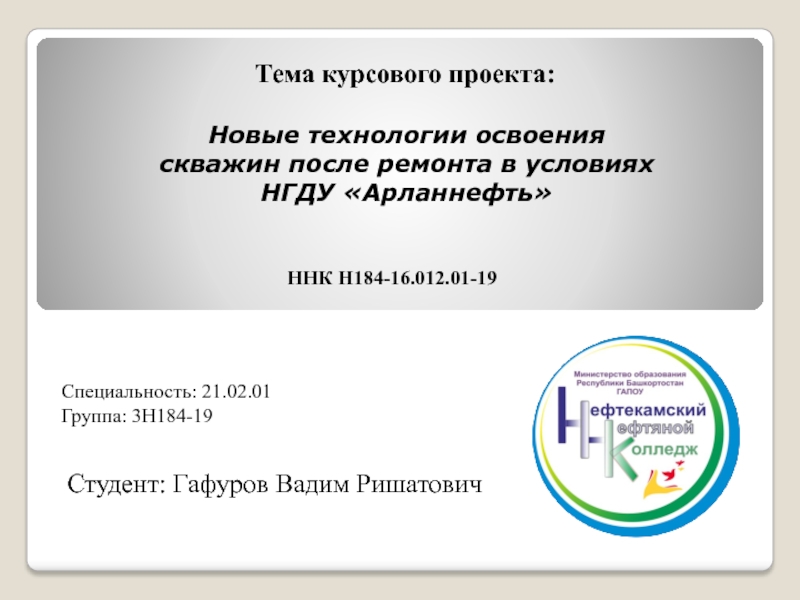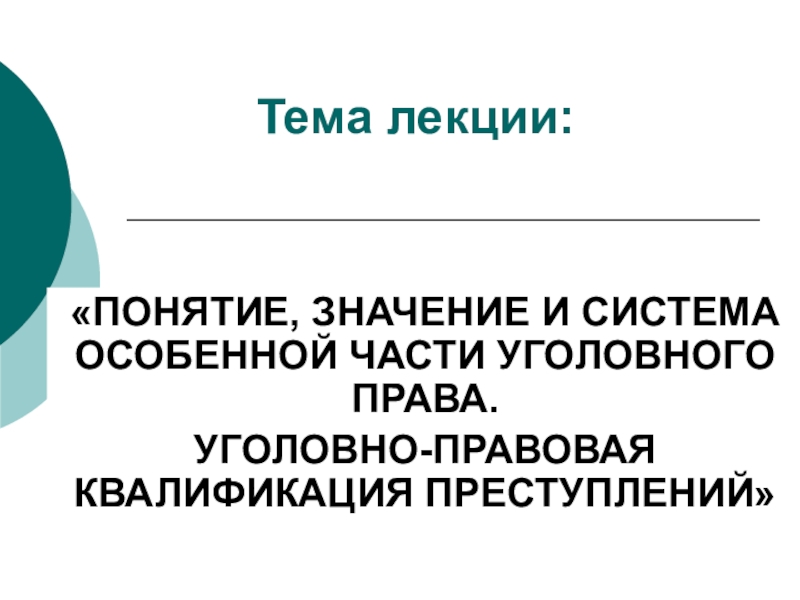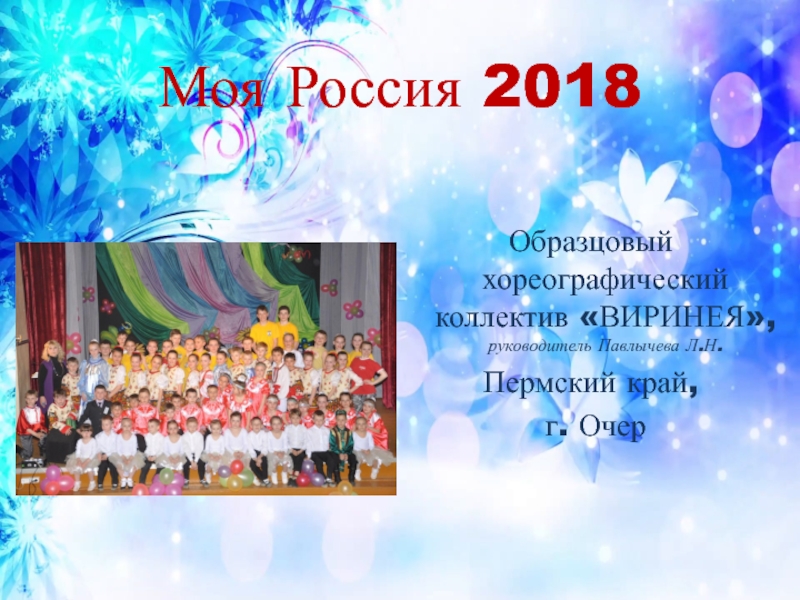Слайд 1Education in The United Kington
What do we know about the
system of education in the United Kingdom?
Слайд 2Full – time education is compulsory up to the middle
teenage years.
Слайд 3The academic year begins at the end of summer.
Слайд 4Schools funded by the government, either directly or via local
education authorities, are called “state schools” and education provided in
this way is known as “ state education”.
Слайд 5This distinguishes it from “ private education”, which comprises “
independent schools”. Some independent schools are known as “public schools”.
Слайд 6Schools in Britain have three terms a year, each with
a short, half-term break in the middle and longer holidays
at Christmas and Easter and in the summer.
Слайд 7Nearly all schools work a five-day week, with no half-day,
and are closed on Saturdays.
Слайд 8The day starts at or just before nine o’clock and
finishes between three and four, or a bit later for
older children. The lunch break usually lasts about an hour- and –a –quarter.
Слайд 964% of 3-4 –year olds in the UK attend some
form of pre-school education
Слайд 10Compulsory education is free of charge, but parents may spend
money on educating their children privately.
Слайд 11Education is compulsory from the age of 5 to 16
Слайд 12There is usually a move from primary to secondary school
at about the age of 11but schools are organized in
a number of different ways.
Слайд 13The Department for education and Skills maintains overall control although
local education authorities and head teachers have considerable powers in
planning and administration.
Слайд 14The National Curriculum introduced in 1988 sets levels of attainment
for all pupils at the end of Key-stages 1-3 at
ages 7,11 and 14.
Слайд 15In primary schools, the children are mostly taught by a
class teacher who teaches all sujects.
Слайд 16About 90 per cent of secondary schools in Britain are
now comprehensive, taking children of all abilities from their local
area.
Слайд 17In secondary schools, pupils have different teachers for different subjects
and are given regular homework.
Слайд 18The older children get, the more likely they are to
be separated into groups according to their perceived abilities, sometimes
for particular subjects only, sometimes across all subjects.
Слайд 1975% of pupils now continue in full – time education
after the end of compulsory schooling at age 16.
Слайд 20They may study for A levels or vocational qualifications at:
the
sixth form of their own secondary school;
a separate sixth form
college or a college of further educetion.
Слайд 21Exams and qualifications
GCSE = General Certificate of Secondary Education. The
exams taken by most 15 to 16 year-olds in England,
Wales and Northern Ireland. Marks are given for each subject separately. The syllabuses and methods of examination of the various examining boards differ. However, there is a uniform system of marks, all being graded from A to G. Grades A,B and C are regarded as ‘good’ grades.
Слайд 22A Levels = Advanced Levels. Higher-level academic exams set by
the same examining boards that set GCSE. They are taken
mostly by people around the age of 18 who wish to go on to higher education.
Слайд 23GNVQ=General National Vocational Qualification. Courses and exams in job-related subjects.
Most commonly, GNVQ courses are studied at Colleges of Further
Education, but more and more schools are also offering them.
Слайд 24Degree: A qualification from a university. Students studying for a
first degree are called undergraduates. When they have been awarded
a degree, they are known as graduates.
Слайд 25Bachelor’s Degree
The general name for a first degree, most commonly
a BA (= bachelor of Arts) or BSc ( Bachelor
of Science)
Слайд 26Master’s Degree:
The general name for a second ( postgraduate) degree,
most commonly an MA or MSc. At Scottish universities, however,
these titles are used for first degree.
Слайд 27Doctorate:
The highest academic qualification. This usually( but not everywhere) carries
the title PhD (=Doctor of Philosophy). The time taken to
complete a doctorate varies, but it is generally expected to involve three years of more-or-less full-time study.
Слайд 28The open University
This is one development in education in which
Britain can claim to have led the world. It allows
people who do not have the opportunity to be ordinary ‘students’ to study for a degree. Its courses are taught through TV, radio and specially written coursebooks.
Слайд 29Types of university
There are no important official or legal distinctions
between the various types of university in the country. But
it is possible to discern a few broad categories.
Слайд 30Oxbridge
This name denotes the universities of Oxford and Cambridge, both
founded in the medieval period. They are federations of semi-independent
colleges, each college having its own staff. Lectures and laboratory work are organized at university level. There are two university libraries, both of which are legally entitled to a free copy of every book published in Britain.
Слайд 31The old Scottish universities
They are Glasgow, Edinburgh, Aberdeen and St.
Andrews. The last of these resembles Oxbridge in many ways,
while the others three are more like civic universities in that most of the students live at home or find their own rooms in town. At all of them the pattern of study is closer to the continental tradition than to the English one- there is less specialization than at Oxbridge.
Слайд 32The early 19th-century English universities.
They are Durham University ( its
collegiate living arrangement are similar to Oxbridge), the University of
London.
Слайд 33The older civic (redbrick) universities.
During the 19th century various institutes
of higher education sprang up in the new industrial towns
and cities such as Birmingham, Manchester and Leeds. Their buildings were of local material, often brick. They prepared students for London University degrees, but later they were given the right to award their own degree, and so became universities themselves.
Слайд 34The campus universities.
These are purpose-built institutions located in the countryside
but close to towns. Examples are East Anglia, Lancaster, Sussex
and Warwick.
Слайд 35The newer civic universities.
These were originally technical colleges set up
by local authorities in the first half of the 20th
century. They are Aston in Birmingham, Salford near Manchester, Strathclyde in Glasgow and so on.
